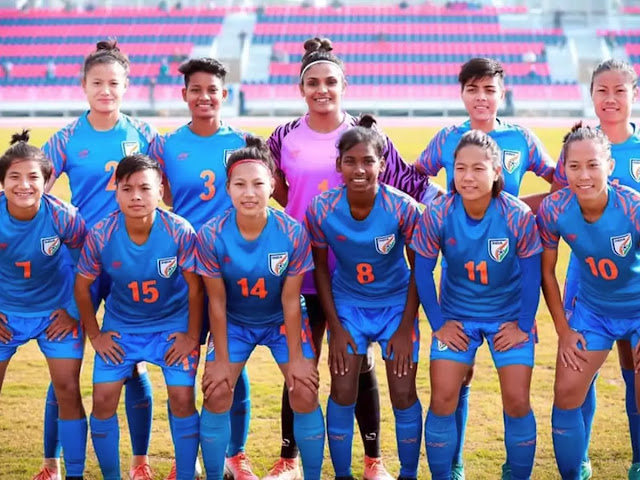Indian Womens National Football Team
India national football team
Women's football has not had the relative advantage in the sport that the men's game has had, and also has not become as prevalent in the country as its male counterpart. The game was administered by the Women's Football Federation of India (WFFI) from 1975 until the early 1990s when they were absorbed into the AIFF. However, there are complaints that women's football is treated as a poor relation to the men's game, leading to (unfulfilled) plans to de-merge the WFFI.
The women's game, like the men's game, also has its early
pioneers in the state of West Bengal. The large Kolkata teams, East Bengal and
Mohun Bagan started women's club sides in the 2000–01 season, and they
participate with other teams in the Calcutta Women's Football League. However,
it has been seen recently that players from Odisha and Manipur have made
advances in the game. Players from these two states make up a large part of the
Indian women's national football team.
The women's national competition is played on a state vs.
state basis in the India women's football championship.[9] There are also
similar national championships for junior teams like the Junior Girls National
Championship (for under 19s) and the Under-17 Girls National Championship.
Some female players have become internationally recognized.
Among them is Chitra Gangadharan who was selected to play for the All Asian
Star team. Janaki Kotecha was selected as captain of the All Asian Star Team in
2008–2009, where she led her team to victory. In February 2000, Sujata Kar and
Alpana Sil became the first Indian footballers to sign a contract outside
India. They signed with the German team TSV Crailsheim but had to return after
a month due to problems with the clearance of their international transfer.
Until 1983, women's football took part in international tournaments like the AFC Women's Asian Cup. For example, the team won silver in 1980 at Calicut. In later years it had become poor in status just like its male counterpart. During the 2003 AFC Women's Championship, the Indian team was embarrassed by a 12–0 defeat to China.
The poor support of the national team by the AIFF became
evident when the team's trip to Germany was only made possible by Non-Resident
Indians in the country and by the support of the German Football Association.
Furthermore, championships are held in remote locations and national media
coverage is said to be restricted to state and local newspapers.
The women's game reached a new low in June 2009 when FIFA delisted the side from its world rankings for being out of action for more than 18 months.[11] This comes at a time when the game was gaining in popularity amongst the younger generation as evident by the local leagues conducted around the country. The recently concluded Mumbai Women's Football League 2009–10 organized by the MDFA (Mumbai District Football Association) was a major success and featured many talented players who had played for the national team. Furthermore, the popularity of the event gave hope that the women's game could rise in India.
One of the barriers to the sport growing is that many women
experience prejudice for playing the sport.
On 17 December 2014, General Secretary of the All India
Football Federation, Kushal Das, gave a presentation on the future of women's
football in India during a meeting with FIFA.[17] During his presentation, Das
stated that the goal for women's football from 2014 to 2017 was to increase the
ranking of the Indian senior team to the top 40s and the top 8 in Asia, start a
professional women's league by 2015, and to qualify for both the U19 and U16
versions of the AFC championships.





Nice info
ReplyDeleteเว็บบอล